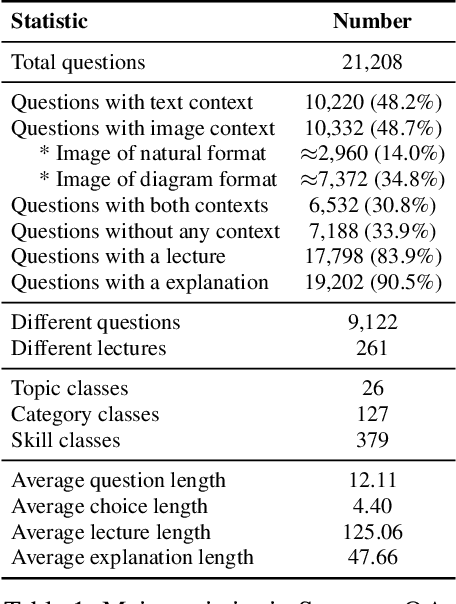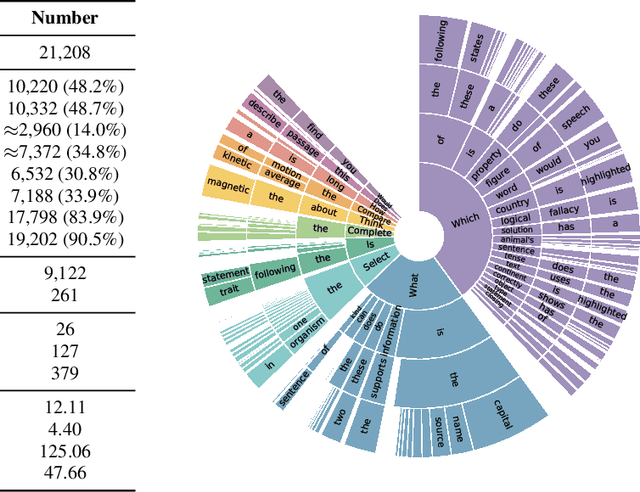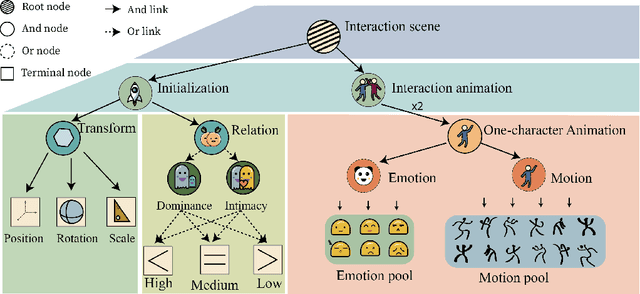Liang Qiu
Artificial Intelligence-Enhanced Couinaud Segmentation for Precision Liver Cancer Therapy
Nov 05, 2024Abstract:Precision therapy for liver cancer necessitates accurately delineating liver sub-regions to protect healthy tissue while targeting tumors, which is essential for reducing recurrence and improving survival rates. However, the segmentation of hepatic segments, known as Couinaud segmentation, is challenging due to indistinct sub-region boundaries and the need for extensive annotated datasets. This study introduces LiverFormer, a novel Couinaud segmentation model that effectively integrates global context with low-level local features based on a 3D hybrid CNN-Transformer architecture. Additionally, a registration-based data augmentation strategy is equipped to enhance the segmentation performance with limited labeled data. Evaluated on CT images from 123 patients, LiverFormer demonstrated high accuracy and strong concordance with expert annotations across various metrics, allowing for enhanced treatment planning for surgery and radiation therapy. It has great potential to reduces complications and minimizes potential damages to surrounding tissue, leading to improved outcomes for patients undergoing complex liver cancer treatments.
ST-NeRP: Spatial-Temporal Neural Representation Learning with Prior Embedding for Patient-specific Imaging Study
Oct 25, 2024Abstract:During and after a course of therapy, imaging is routinely used to monitor the disease progression and assess the treatment responses. Despite of its significance, reliably capturing and predicting the spatial-temporal anatomic changes from a sequence of patient-specific image series presents a considerable challenge. Thus, the development of a computational framework becomes highly desirable for a multitude of practical applications. In this context, we propose a strategy of Spatial-Temporal Neural Representation learning with Prior embedding (ST-NeRP) for patient-specific imaging study. Our strategy involves leveraging an Implicit Neural Representation (INR) network to encode the image at the reference time point into a prior embedding. Subsequently, a spatial-temporally continuous deformation function is learned through another INR network. This network is trained using the whole patient-specific image sequence, enabling the prediction of deformation fields at various target time points. The efficacy of the ST-NeRP model is demonstrated through its application to diverse sequential image series, including 4D CT and longitudinal CT datasets within thoracic and abdominal imaging. The proposed ST-NeRP model exhibits substantial potential in enabling the monitoring of anatomical changes within a patient throughout the therapeutic journey.
Contrastive Learning with Counterfactual Explanations for Radiology Report Generation
Jul 19, 2024



Abstract:Due to the common content of anatomy, radiology images with their corresponding reports exhibit high similarity. Such inherent data bias can predispose automatic report generation models to learn entangled and spurious representations resulting in misdiagnostic reports. To tackle these, we propose a novel \textbf{Co}unter\textbf{F}actual \textbf{E}xplanations-based framework (CoFE) for radiology report generation. Counterfactual explanations serve as a potent tool for understanding how decisions made by algorithms can be changed by asking ``what if'' scenarios. By leveraging this concept, CoFE can learn non-spurious visual representations by contrasting the representations between factual and counterfactual images. Specifically, we derive counterfactual images by swapping a patch between positive and negative samples until a predicted diagnosis shift occurs. Here, positive and negative samples are the most semantically similar but have different diagnosis labels. Additionally, CoFE employs a learnable prompt to efficiently fine-tune the pre-trained large language model, encapsulating both factual and counterfactual content to provide a more generalizable prompt representation. Extensive experiments on two benchmarks demonstrate that leveraging the counterfactual explanations enables CoFE to generate semantically coherent and factually complete reports and outperform in terms of language generation and clinical efficacy metrics.
Aligning Large Language Models via Fine-grained Supervision
Jun 04, 2024



Abstract:Pre-trained large-scale language models (LLMs) excel at producing coherent articles, yet their outputs may be untruthful, toxic, or fail to align with user expectations. Current approaches focus on using reinforcement learning with human feedback (RLHF) to improve model alignment, which works by transforming coarse human preferences of LLM outputs into a feedback signal that guides the model learning process. However, because this approach operates on sequence-level feedback, it lacks the precision to identify the exact parts of the output affecting user preferences. To address this gap, we propose a method to enhance LLM alignment through fine-grained token-level supervision. Specifically, we ask annotators to minimally edit less preferred responses within the standard reward modeling dataset to make them more favorable, ensuring changes are made only where necessary while retaining most of the original content. The refined dataset is used to train a token-level reward model, which is then used for training our fine-grained Proximal Policy Optimization (PPO) model. Our experiment results demonstrate that this approach can achieve up to an absolute improvement of $5.1\%$ in LLM performance, in terms of win rate against the reference model, compared with the traditional PPO model.
A Survey of Deep Learning for Mathematical Reasoning
Dec 20, 2022Abstract:Mathematical reasoning is a fundamental aspect of human intelligence and is applicable in various fields, including science, engineering, finance, and everyday life. The development of artificial intelligence (AI) systems capable of solving math problems and proving theorems has garnered significant interest in the fields of machine learning and natural language processing. For example, mathematics serves as a testbed for aspects of reasoning that are challenging for powerful deep learning models, driving new algorithmic and modeling advances. On the other hand, recent advances in large-scale neural language models have opened up new benchmarks and opportunities to use deep learning for mathematical reasoning. In this survey paper, we review the key tasks, datasets, and methods at the intersection of mathematical reasoning and deep learning over the past decade. We also evaluate existing benchmarks and methods, and discuss future research directions in this domain.
OpenD: A Benchmark for Language-Driven Door and Drawer Opening
Dec 10, 2022



Abstract:We introduce OPEND, a benchmark for learning how to use a hand to open cabinet doors or drawers in a photo-realistic and physics-reliable simulation environment driven by language instruction. To solve the task, we propose a multi-step planner composed of a deep neural network and rule-base controllers. The network is utilized to capture spatial relationships from images and understand semantic meaning from language instructions. Controllers efficiently execute the plan based on the spatial and semantic understanding. We evaluate our system by measuring its zero-shot performance in test data set. Experimental results demonstrate the effectiveness of decision planning by our multi-step planner for different hands, while suggesting that there is significant room for developing better models to address the challenge brought by language understanding, spatial reasoning, and long-term manipulation. We will release OPEND and host challenges to promote future research in this area.
Dynamic Prompt Learning via Policy Gradient for Semi-structured Mathematical Reasoning
Sep 29, 2022



Abstract:Mathematical reasoning, a core ability of human intelligence, presents unique challenges for machines in abstract thinking and logical reasoning. Recent large pre-trained language models such as GPT-3 have achieved remarkable progress on mathematical reasoning tasks written in text form, such as math word problems (MWP). However, it is unknown if the models can handle more complex problems that involve math reasoning over heterogeneous information, such as tabular data. To fill the gap, we present Tabular Math Word Problems (TabMWP), a new dataset containing 38,431 open-domain grade-level problems that require mathematical reasoning on both textual and tabular data. Each question in TabMWP is aligned with a tabular context, which is presented as an image, semi-structured text, and a structured table. There are two types of questions: free-text and multi-choice, and each problem is annotated with gold solutions to reveal the multi-step reasoning process. We evaluate different pre-trained models on TabMWP, including the GPT-3 model in a few-shot setting. As earlier studies suggest, since few-shot GPT-3 relies on the selection of in-context examples, its performance is unstable and can degrade to near chance. The unstable issue is more severe when handling complex problems like TabMWP. To mitigate this, we further propose a novel approach, PromptPG, which utilizes policy gradient to learn to select in-context examples from a small amount of training data and then constructs the corresponding prompt for the test example. Experimental results show that our method outperforms the best baseline by 5.31% on the accuracy metric and reduces the prediction variance significantly compared to random selection, which verifies its effectiveness in the selection of in-context examples.
Learn to Explain: Multimodal Reasoning via Thought Chains for Science Question Answering
Sep 20, 2022



Abstract:When answering a question, humans utilize the information available across different modalities to synthesize a consistent and complete chain of thought (CoT). This process is normally a black box in the case of deep learning models like large-scale language models. Recently, science question benchmarks have been used to diagnose the multi-hop reasoning ability and interpretability of an AI system. However, existing datasets fail to provide annotations for the answers, or are restricted to the textual-only modality, small scales, and limited domain diversity. To this end, we present Science Question Answering (SQA), a new benchmark that consists of ~21k multimodal multiple choice questions with a diverse set of science topics and annotations of their answers with corresponding lectures and explanations. We further design language models to learn to generate lectures and explanations as the chain of thought (CoT) to mimic the multi-hop reasoning process when answering SQA questions. SQA demonstrates the utility of CoT in language models, as CoT improves the question answering performance by 1.20% in few-shot GPT-3 and 3.99% in fine-tuned UnifiedQA. We also explore the upper bound for models to leverage explanations by feeding those in the input; we observe that it improves the few-shot performance of GPT-3 by 18.96%. Our analysis further shows that language models, similar to humans, benefit from explanations to learn from fewer data and achieve the same performance with just 40% of the data.
Structure Extraction in Task-Oriented Dialogues with Slot Clustering
Mar 15, 2022



Abstract:Extracting structure information from dialogue data can help us better understand user and system behaviors. In task-oriented dialogues, dialogue structure has often been considered as transition graphs among dialogue states. However, annotating dialogue states manually is expensive and time-consuming. In this paper, we propose a simple yet effective approach for structure extraction in task-oriented dialogues. We first detect and cluster possible slot tokens with a pre-trained model to approximate dialogue ontology for a target domain. Then we track the status of each identified token group and derive a state transition structure. Empirical results show that our approach outperforms unsupervised baseline models by far in dialogue structure extraction. In addition, we show that data augmentation based on extracted structures enriches the surface formats of training data and can achieve a significant performance boost in dialogue response generation.
Triangular Character Animation Sampling with Motion, Emotion, and Relation
Mar 09, 2022



Abstract:Dramatic progress has been made in animating individual characters. However, we still lack automatic control over activities between characters, especially those involving interactions. In this paper, we present a novel energy-based framework to sample and synthesize animations by associating the characters' body motions, facial expressions, and social relations. We propose a Spatial-Temporal And-Or graph (ST-AOG), a stochastic grammar model, to encode the contextual relationship between motion, emotion, and relation, forming a triangle in a conditional random field. We train our model from a labeled dataset of two-character interactions. Experiments demonstrate that our method can recognize the social relation between two characters and sample new scenes of vivid motion and emotion using Markov Chain Monte Carlo (MCMC) given the social relation. Thus, our method can provide animators with an automatic way to generate 3D character animations, help synthesize interactions between Non-Player Characters (NPCs), and enhance machine emotion intelligence (EQ) in virtual reality (VR).
 Add to Chrome
Add to Chrome Add to Firefox
Add to Firefox Add to Edge
Add to Edge